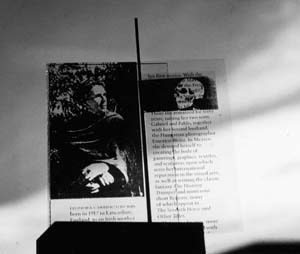
Research & Professional Activity
TRADITION, PERCEPTION,
DEATH
AND DESIGN
An MDP in Progress
When a plastic casket designed by the Toronto firm Wilcox+Lori was given an honorable mention in ID Magazine, the juror's comment was, "l give them credit for approaching an area that most designers wouldn't touch... This really is the dark side of design." While consumer products are a necessary reality of last rites, death is indeed an area that few industrial designers have approached.
This may be due in part to the evolution of the funeral and memorial professions, and the possible stigma attached to those "dealing in death". Traditional notions of industrial design as defined by mass production techniques contribute to the perception that the profession may not be well suited to the creation of personal: artifacts intended as individual tributes. In addition to concerns for the environment and the influence of technology, there is a design challenge to incorporate personal elements in manufactured products. Possible solutions lie in new materials, and flexible manufacturing techniques which allow for greater "tailoring" of products. Additionally, strict definitions. of the mass .produced are no longer absolute, as designers often accept smaller production runs, one-off creations, private commissions and local design-build projects. . Design opportunities exist for creating a unique class of contemporary products which address current consumer needs more adequately than traditional goods: to enhance participation in meaningful ritual, and to represent a balance of appropriate farewell and celebration of life through artifact.
 |
| Concept Model, Artifacts of Death |
[ Top of Page | Table of Contents | Intervention | Previous Article | Next Article ]